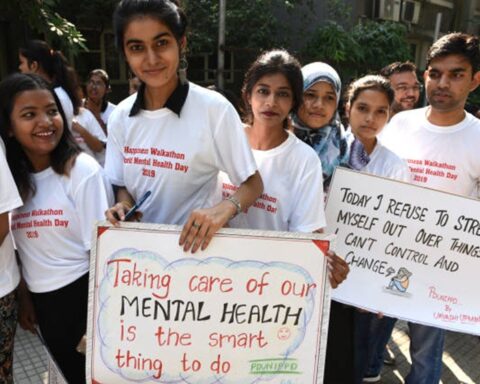New Delhi, May 5 (PTI) A new study has found three brain abnormalities common to insomnia, anxiety and depression — and one of them is a smaller thalamus in the brain, which is linked to attention and memory problems.
The other two are — a weaker connectivity which hampers communication between brain regions and a reduced area of the cerebral cortex, a form of brain damage also impacting memory and language.
Insomnia, or having trouble falling or staying asleep, has been studied to increase the risk of mental disorders, including anxiety and depression.
“In addition, some abnormalities are unique to each disorder. For example, the severity of insomnia appears to be more closely related to smaller volumes in the brain areas associated with reward,” author Elleke Tissink, from the Vrije Universiteit Amsterdam, the Netherlands, said.
Analysing brain scans of over 40,000 people from the UK Biobank dataset, the team mapped similarities and differences between the common mental health conditions.
The findings, published in the journal ‘Nature Mental Health’, could help develop new treatments, as currently available ones are only moderately effective and many people experience a return of symptoms, the researchers said.
“The severity of depression, on the other hand, seems to be more strongly related to a thinner cerebral cortex in brain areas associated with language and emotion,” Tissink said.
Further, anxiety is more severe due a weaker reactivity of the amygdala and connectivity between brain regions where dopamine, glutamate, and histamine — all brain chemicals — play a crucial role in communication, the author said.
The amygdala helps process emotions, especially those related to fear and threat, while the brain chemicals are crucial for learning, memory, motivation and being awake.
However, while the affected brain regions are distinct areas, they “appear to represent different pieces of vulnerability within the same puzzle”, according to Tissink.
“The regions seem separate from each other, but when you map them out together, they all turn out to be part of the same circuit — the ‘amygdala-hippocampus-medial prefrontal cortex’ circuit,” Tissink said.
The hippocampus is the brain centre that forms memory, while prefrontal cortex is part of the cerebral cortex and helps with higher level functions, such as self-control and achieving goals.
Studies, including the one published recently in the journal PLOS Global Public Health, have found that excessive screen time can increase the risk of depression by affecting one’s sleep.
Tissink said, “The treatment of insomnia, for example, sometimes also improves depression — but why? By further investigating this question, we hope to find new leads for follow-up research, as well as better treatments.” “Smaller total cortical surface area, smaller thalamic volumes and weaker functional connectivity were linked to more severe symptoms of all three disorders,” the authors wrote.
Symptoms specific to insomnia, anxiety or depression “were often in parts of the amygdala-hippocampal-medial prefrontal circuit, highlighting the interconnectedness of these disorders and suggesting new pathways for research and treatment,” the team wrote.





